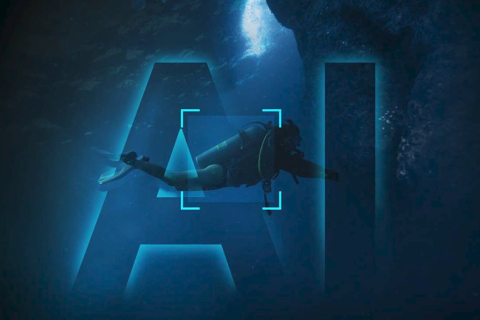In some parts of the country, no definitive blueprint exists for getting crude to market. However, some developments are in the works that should be more cost-and time-efficient for producers.
A panel of infrastructure experts at Hart Energy’s recently held DUO 2012 Conference and Exhibition in Denver talked about achievements and challenges in rail take-away, trucking and pipeline projects.
Greg Haas, Hart Energy’s manager of research, kicked off the session with a historical review of domestic onshore oil production, particularly in the Rocky Mountain region.
Haas said that he sees the crude value chain changing for the positive throughout the upstream, midstream and downstream sectors. On the upstream side, Haas cited U.S. Department of Energy statistics that indicate onshore oil production began to trail off in the early 1980s, at which time offshore was ramped up and reigned until recent years. Onshore oil production, however, is back in a big way.
“In post-Macando moratoria and in recent years since 2009 and 2010, we’ve seen offshore production fall while onshore production has grown largely because of unconventional sources,” he said.
Haas said that three-quarters of domestically produced crude barrels are transported around the country to the refining network by pipelines. “But you’ll see rail tankers, truck tankers and waterborne tankers. These are all delivering crude across the country to the refining network,” he said.
Three-quarters of the refining fleet is along the coastal parts of the nation. “In the upward and inland portions of the country, where only one quarter of refining capacity exists, we’re seeing big green. We have 4% of U.S. refining capacity in and around the Rocky Mountains seeing some of the highest margins—and in fact the highest long-term margin—in the refining industry. And the Midcontinent is nothing to slouch at either.”
Hart’s quarterly North American production surveys follow the Department of Energy’s PADD numbering system, which includes the Rocky Mountains in PADD 4. Haas said the latest report shows good growth in PADDs 2, 3 and 4, respectively the Midwest, the Gulf Coast and the Rocky Mountains.
Increased production values out of these regions translate into refinery crude-acquisition cost advantages. For the last three years, PADD 2 and PADD 4 have had below-average acquisition costs, Haas said.
For the Rockies, the news gets even better. “From a crack-spread perspective the Rockies are literally and figuratively on top of the refining world,” Haas said.
Christopher Keene, the president and chief executive and the founder of Rangeland Energy LLC, talked about the company’s new Crude Oil Loading Terminal (COLT) Hub in Williams County, North Dakota.
Keene said crude-by-rail has been increasing in the two years he has been working in North Dakota. At first, rail accounted for about 20% of the crude shipped. Rail now handles about one-third of transported crude, he said.
“North Dakota crude continues to be discounted when compared with WTI or Brent,” he said. “The point is this: If you can get your crude oil out of North Dakota and, let’s say, down to the Gulf Coast, there’s quite a bit of money to be made in making that move.”
Tad True, the vice president of Belle Fourche and Bridger Pipelines, talked about the game-changing Four Bears Pipeline in the Bakken.
The pipeline, which was brought into service in September, delivers crude to the Butte Pipeline terminal in Baker, Montana, and the Bakken Oil Express Rail Terminal in Dickinson, Montana. Four Bears’ capacity is 80,000 bbl. per day to Baker and 30,000 bbl. per day to the Bakken Oil Express.
“Without Four Bears, you’d have a well in upper McKenzie County, and the operator would call up a truck. That truck would load about 200 bbl. into its tanker, drive down Highway 22, cross Interstate 94, and unload at our Fryburg, Montana, terminal. Then we’d ship it to market. Then that truck goes back up Highway 85, crosses Highway 23 and does the whole thing over again,” he said. “Round trip was 232 miles just to deliver 200 bbl. of oil at a cost of about $5 per bbl.”
With Four Bears, the pipeline delivers the crude directly to Fryburg from McKenzie County, and truck mileage is reduced to about 30 miles round trip. The total trucking cost is reduced to $1.50 per bbl.
Meanwhile, Belle Fourche Pipeline and Kinder Morgan are involved in a joint venture to build the Pony Express Pipeline.
Recommended Reading
TGS, SLB to Conduct Engagement Phase 5 in GoM
2024-02-05 - TGS and SLB’s seventh program within the joint venture involves the acquisition of 157 Outer Continental Shelf blocks.
2023-2025 Subsea Tieback Round-Up
2024-02-06 - Here's a look at subsea tieback projects across the globe. The first in a two-part series, this report highlights some of the subsea tiebacks scheduled to be online by 2025.
StimStixx, Hunting Titan Partner on Well Perforation, Acidizing
2024-02-07 - The strategic partnership between StimStixx Technologies and Hunting Titan will increase well treatments and reduce costs, the companies said.
Tech Trends: QYSEA’s Artificially Intelligent Underwater Additions
2024-02-13 - Using their AI underwater image filtering algorithm, the QYSEA AI Diver Tracking allows the FIFISH ROV to identify a diver's movements and conducts real-time automatic analysis.
Subsea Tieback Round-Up, 2026 and Beyond
2024-02-13 - The second in a two-part series, this report on subsea tiebacks looks at some of the projects around the world scheduled to come online in 2026 or later.





